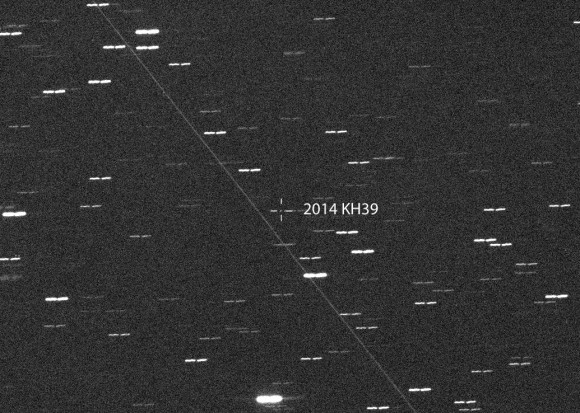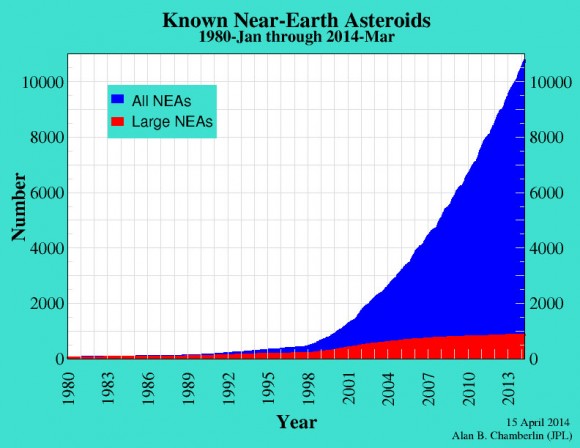June 3: Tomorrow around 3 p.m. CDT (20:00 UT) asteroid 2014 KH39 will silently zip by Earth at a distance of just 272,460 miles (438,480 km) or 1.14 LDs (lunar distance). Close as flybys go but not quite a record breaker. The hefty space rock will buzz across the constellation Cepheus at nearly 25,000 mph (11 km/sec) near the Little Dipper at the time.
Observers in central Europe and Africa will have dark skies for the event, however at magnitude +17 the asteroid
will be too faint to spot in amateur telescopes. No worries. The Virtual Telescope Project, run by astrophysicist Gianluca Masi, will be up and running with real-time images and live commentary during the flyby. The webcast begins at 2:45 p.m. CDT June 3.
 |
| Near Earth asteroid 2014 KH39, discovered on May 24, 2014, is the faint ‘star’ in the crosshairs in this photo made on May 31. |
Observers in central Europe and Africa will have dark skies for the event, however at magnitude +17 the asteroid
will be too faint to spot in amateur telescopes. No worries. The Virtual Telescope Project, run by astrophysicist Gianluca Masi, will be up and running with real-time images and live commentary during the flyby. The webcast begins at 2:45 p.m. CDT June 3.
2014 KH39 was discovered on May 24 by the automated Mt. Lemmon Sky Survey. Further observations by the survey and additional telescopes like Pan-STARRS 1 in Hawaii nailed down its orbit as an Earth-approacher with an approximate size of 72 feet (22 meters). That’s a tad larger than the 65-foot Chelyabinsk asteroid that exploded into thousands of small stony meteorites over Russia in Feb. 2013.
Since this asteroid will safely miss Earth we have nothing to fear from the flyby.
The probability thatr 2014 KH39 will hit Earth on this round is zero. Nor do we know of any asteroid in the near future on a collision course with the planet.



No comments:
Post a Comment